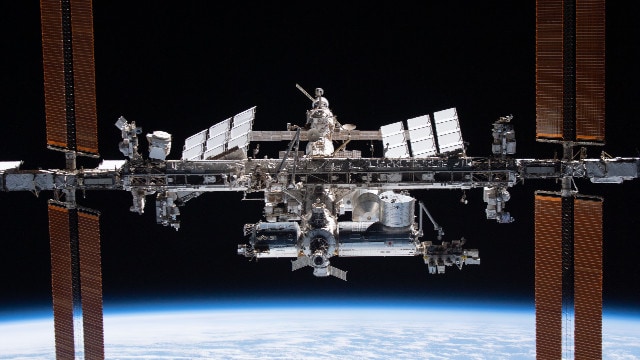

FP StaffFeb 07, 2022 15:05:45 IST
The International Space Station (ISS) has orbited Earth for over two decades now, making possible scientific discoveries that wouldn’t have been possible without this lab in the sky with an international crew of astronauts onboard.
However, as all things good, its date of retirement has been decided. NASA last week announced that the spacecraft will cease operations in 2031 and plunge into the South Pacific Ocean.
As dramatic as it may sound, the decommissioning of the International Space Station will be a highly technical and calculated move from NASA that will provide opportunities for further deep space exploration.
Let’s take a look at the space station’s history, duties and the inevitable retirement:
What is ISS
A brainchild of former US president Ronald Reagan, the ISS was proposed in 1984 as a permanently inhabited spacecraft.
Starting from 1998 till 2000, the space station was built piece by piece that were carried on board several space shuttles. On 2 November, 2000, it welcomed the first crew.
In the last more than 20 years, there have been over 200 astronauts and cosmonauts from 19 different countries onboard the space station at different points of time.
In NASA’s words “the International Space Station is a unique laboratory that is returning enormous scientific, educational, and technological developments to benefit people on Earth and is enabling our ability to travel into deep space”.
To give it a more perceptible definition, the ISS is an artificial satellite in low Earth orbit where astronauts can stay for months and conduct scientific research.
The ISS is a multinational collaborative project that involves NASA (the USA), Roscosmos (Russia), JAXA (Japan), ESA (Europe), and CSA (Canada).
The ISS serves as a microgravity and space environment laboratory for research in multitudes of fields including astrobiology, astronomy, meteorology and physics.
The ISS weighs about a million pounds on Earth and is approximately the size of an American football field. The space station can house a crew of six people. It also has laboratory modules from the US, Russia, Japan, and Europe.
How will ISS retire
NASA has presented the ISS Transition Report, which consists of its plans for the space station in the coming decade including its retirement.
According to NASA’s budget estimates, the ISS’ re-entry into the Earth’s atmosphere will take place in January 2031.
The ISS mission control will start by lowering its altitude, which will result in higher velocity overall. The spacecraft would be manoeuvred to line up to its final target on ground, the South Pacific Oceanic Uninhabited Area (SPOUA).
Near Point Nemo, which is considered a space cemetery, where most decommissioned space projects are directed to. It is located about 2,700km away from land and is named after a character in Jules Verne’s “Twenty Thousand Leagues Under the Sea”.
The ISS was earlier meant to be operational for 15 years, but in 2014, NASA extended its time in space by another 10 years.
With NASA’s latest announcement, it will stay almost a decade longer than its earlier tenure.
The @Space_Station has provided a unique opportunity for research and results for more than 20 years — that’s a lot of science!
The Biden-Harris Administration has extended operations for the orbital lab until 2030. Find out what we’ll be prepping for: https://t.co/zk6B5JIz9f pic.twitter.com/FMcmj0hfen
— NASA (@NASA) January 31, 2022
What after ISS
Once ISS is retired, it will be replaced by “one or more commercially-owned and operated space platforms”.
Phil McAlister, director of commercial space at NASA, said in a statement that the private sector is technically and financially capable of developing and operating commercial low-Earth orbit destinations, with NASA’s assistance.
The space agency estimates to save $1.3 billion in 2031 alone by transitioning from ISS to renting space onboard private commercial platforms.
The money saved by this transition will be used in NASA’s deep space exploration initiatives.
With inputs from agencies
Read all the Latest News, Trending News, Cricket News, Bollywood News,
India News and Entertainment News here. Follow us on Facebook, Twitter and Instagram.